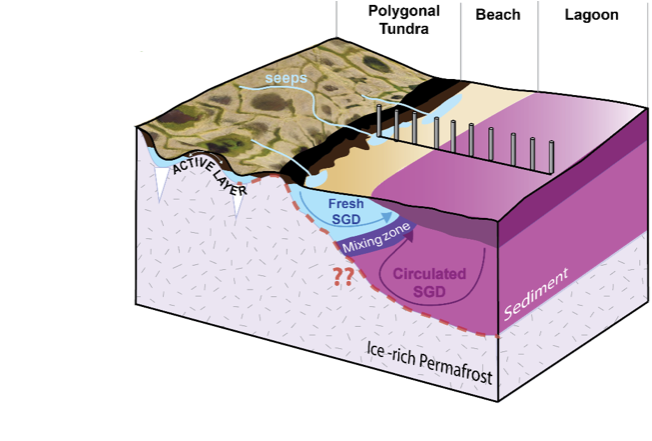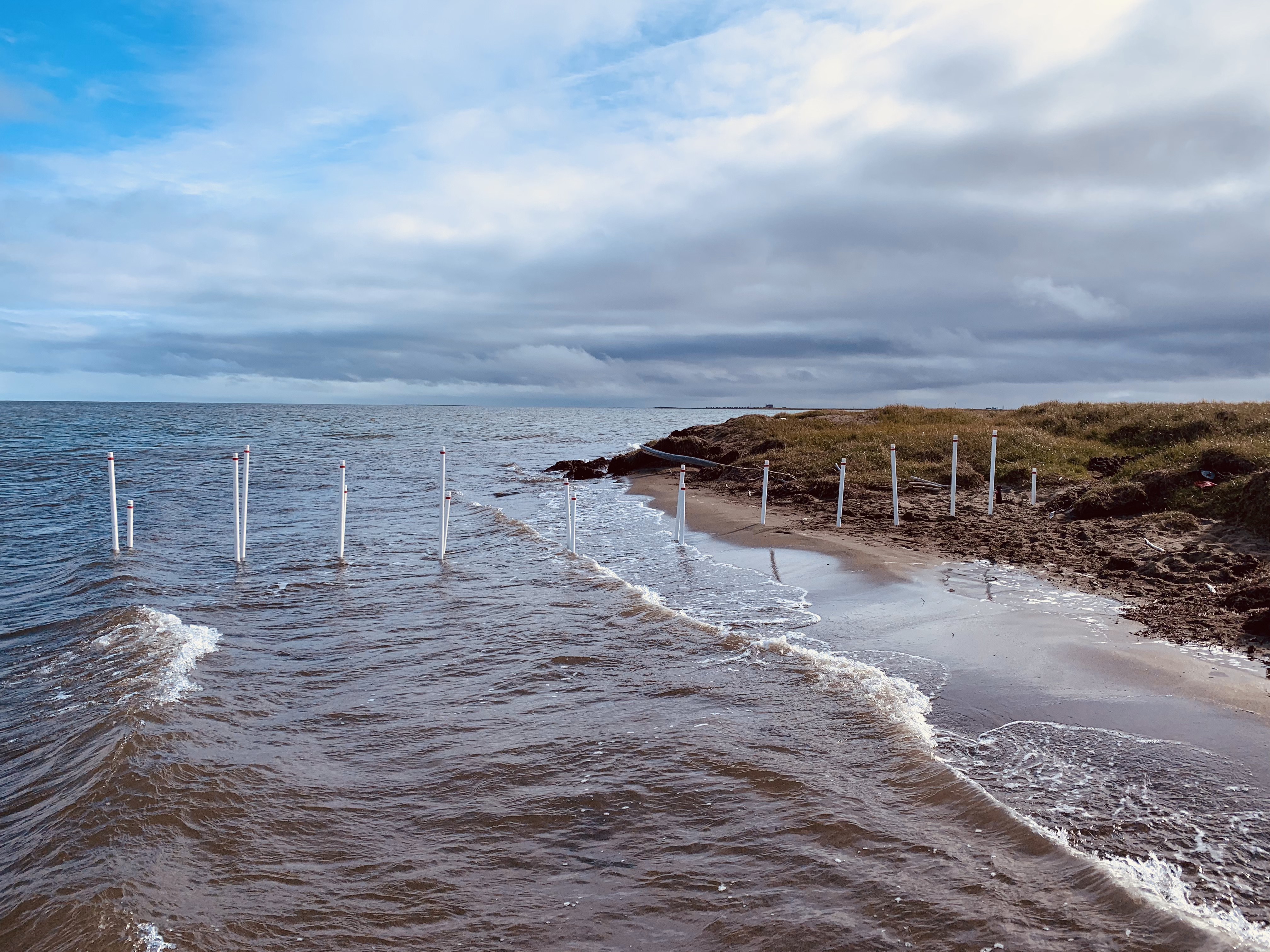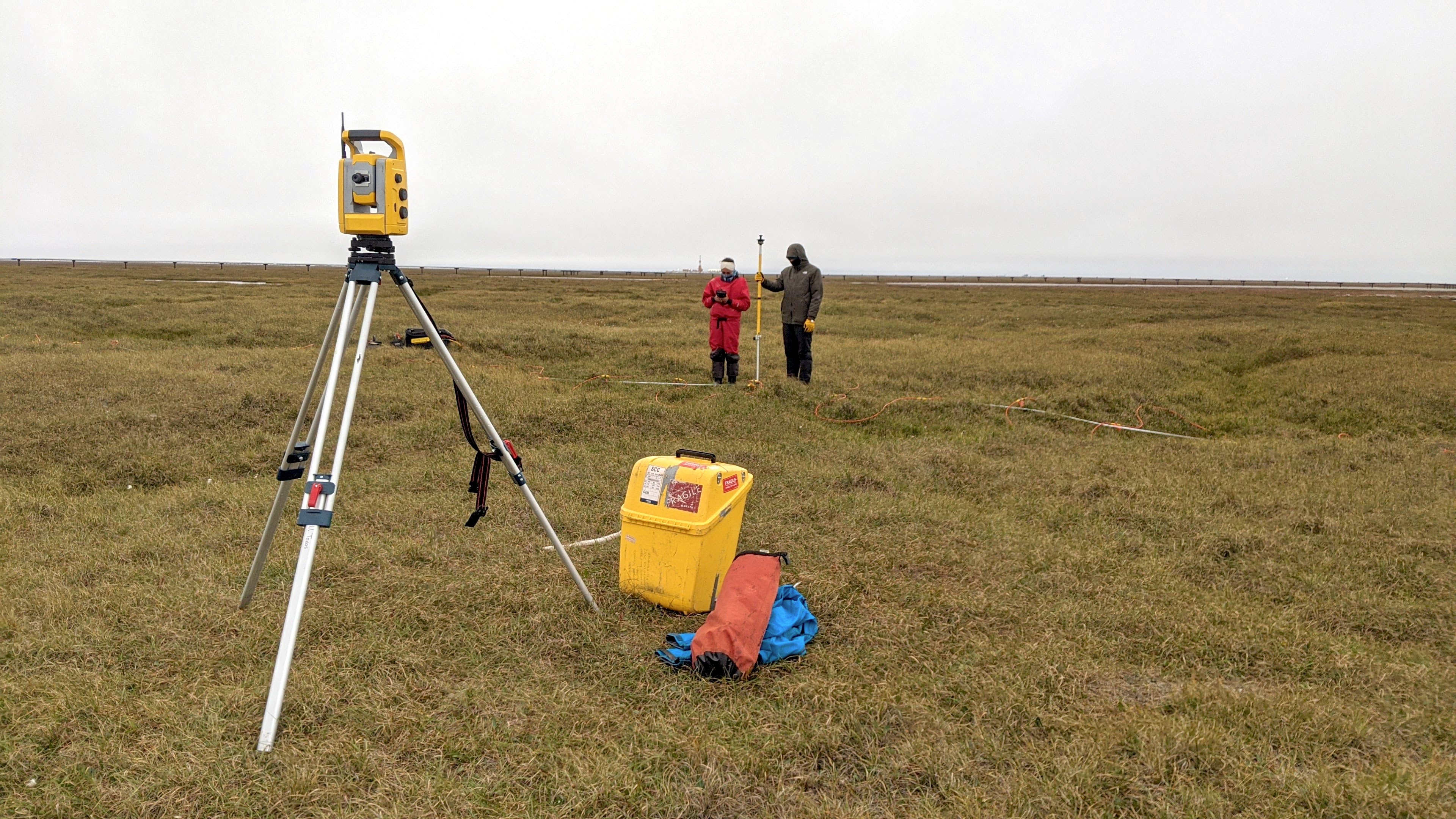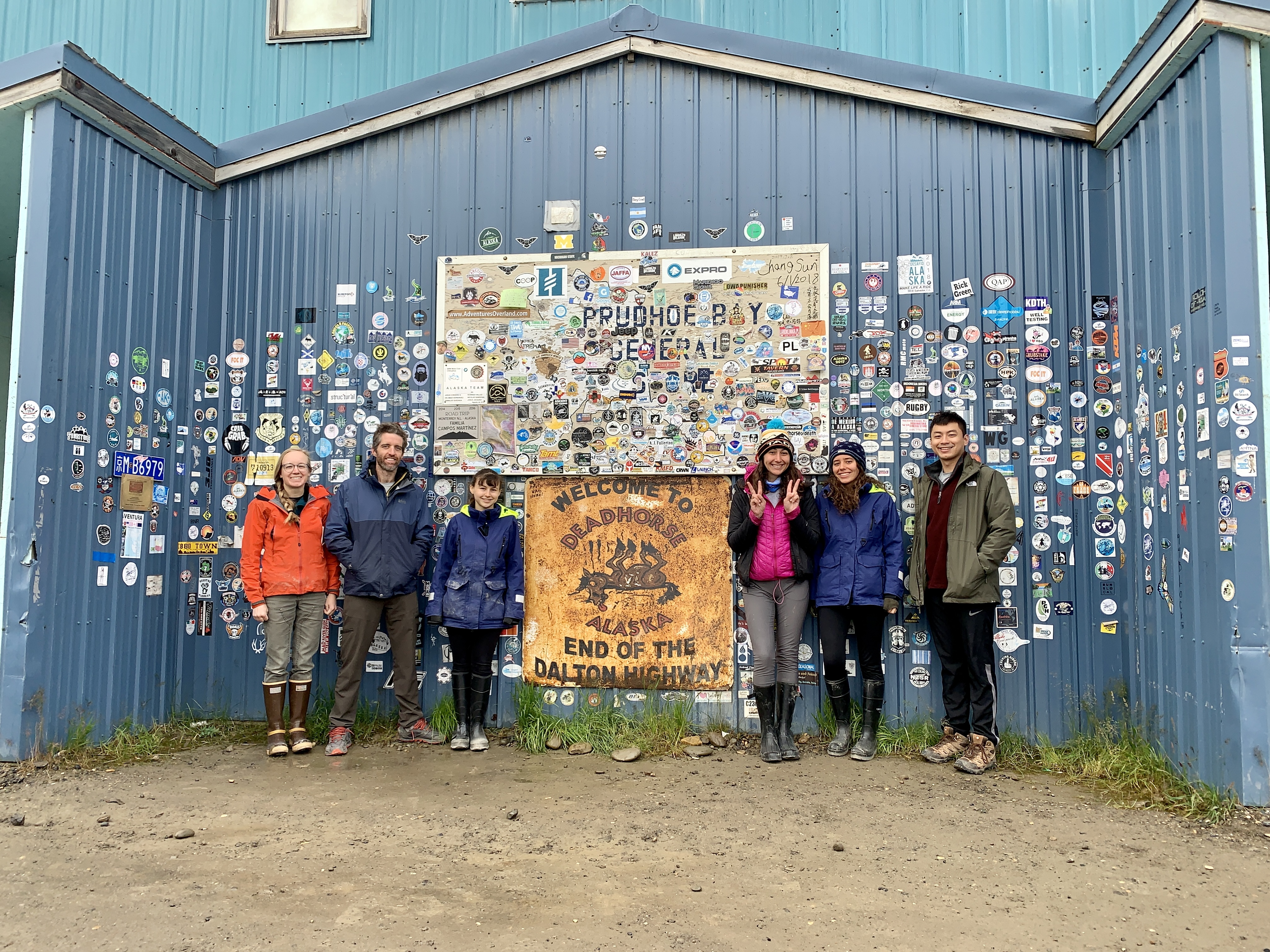Our motivation to conduct this research originates from the fact that groundwater flow is a powerful transfer mechanism for organic matter and energy. This role of groundwater, when it is in contact with the permafrost, is exceptionally more significant in the coastal Arctic. Because, ice-rich permafrost - thawing faster due to climate change- stores twice as much organic carbon as the atmosphere. Release of organics to the surface waters through groundwater enhances the production of biological end products such as CO2 and CH4, which in turn contributes to the climate change. In addition, flow of more groundwater can contribute to the thawing. Therefore, investigation of groundwater in these hydrogeologically under-studied coastal lands is important to assess the potential impacts of climate change driven permafrost thaw on the lagoon ecosystems, coastal communities and infrastructure.

In our Summer 2021 field campaign at Simpson Lagoon, AK, we aimed to expand our understanding on Arctic coastal groundwater dynamics which we gained during our previous expedition to Kaktovik Lagoon in August 2019.

We measured groundwater level, temperature, salinity and Rad7 content along two shore-perpendicular transect of wells, collected water samples to be analyzed for water isotopes and major ions, and soil samples for estimating hydraulic properties. During our campaign, the lagoon was monitored for its level, pCO2 concentration, pH, temperature, turbidity, dissolved solids, dissolved organic matter and dissolved oxygen. To investigate the ice-rich permafrost distribution, we conducted electrical geophysical surveys along and perpendicular to the shore.

These observations represents the first ever documented data in this region and they provide the pieces of a big puzzle we are working to solve, eagerly.

